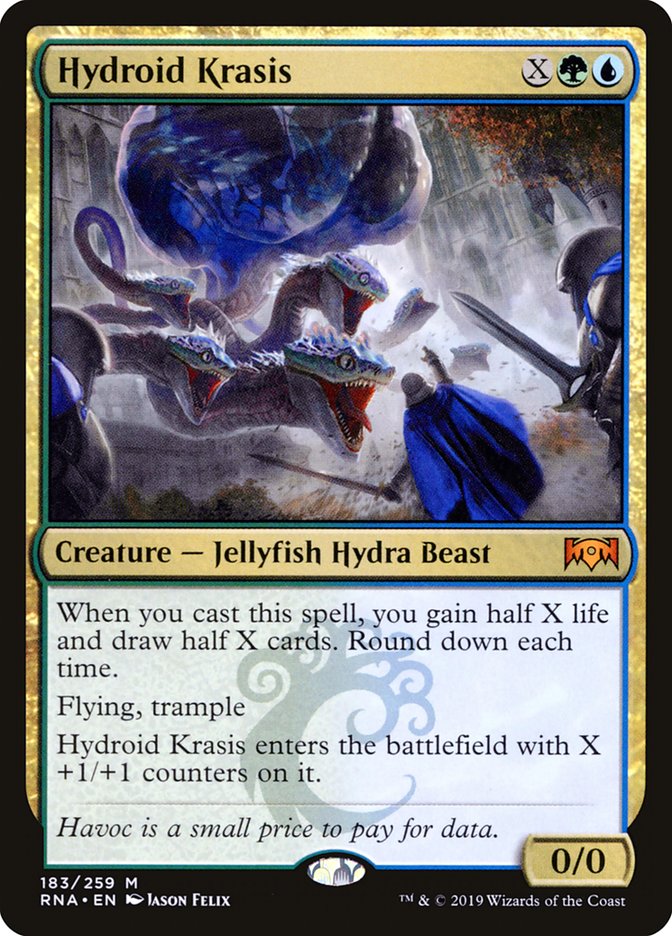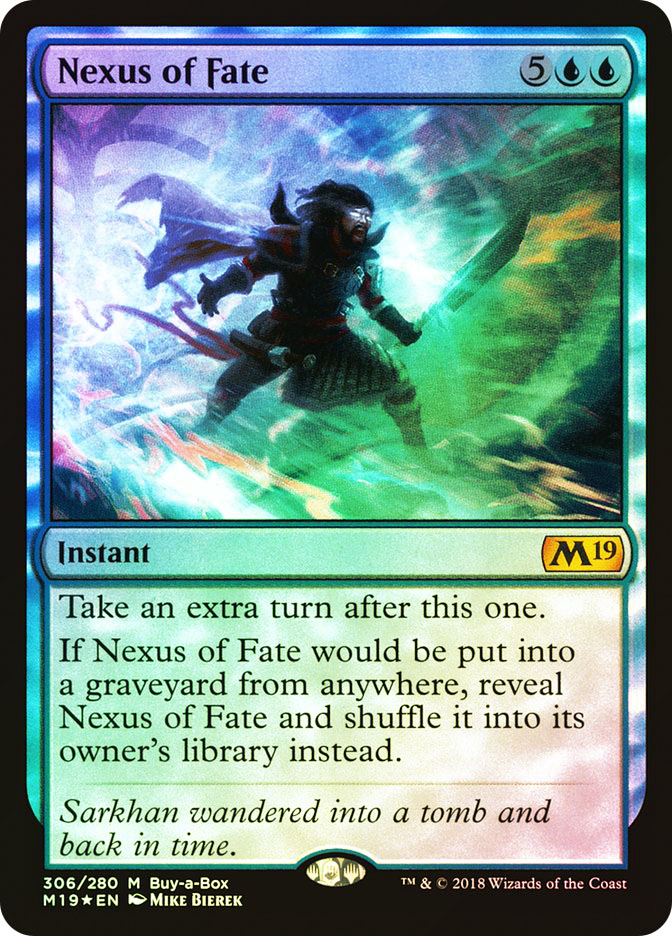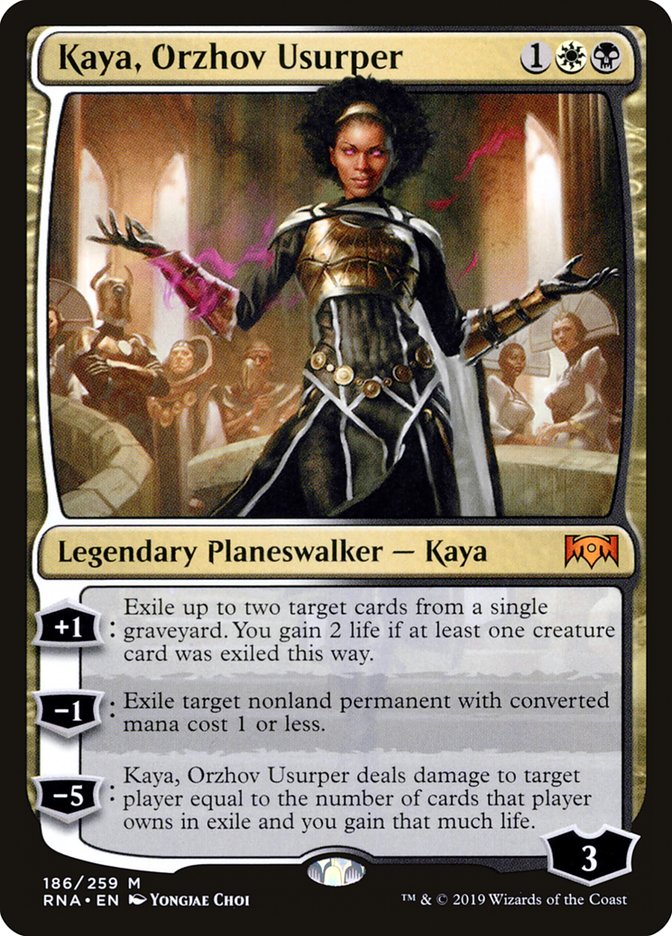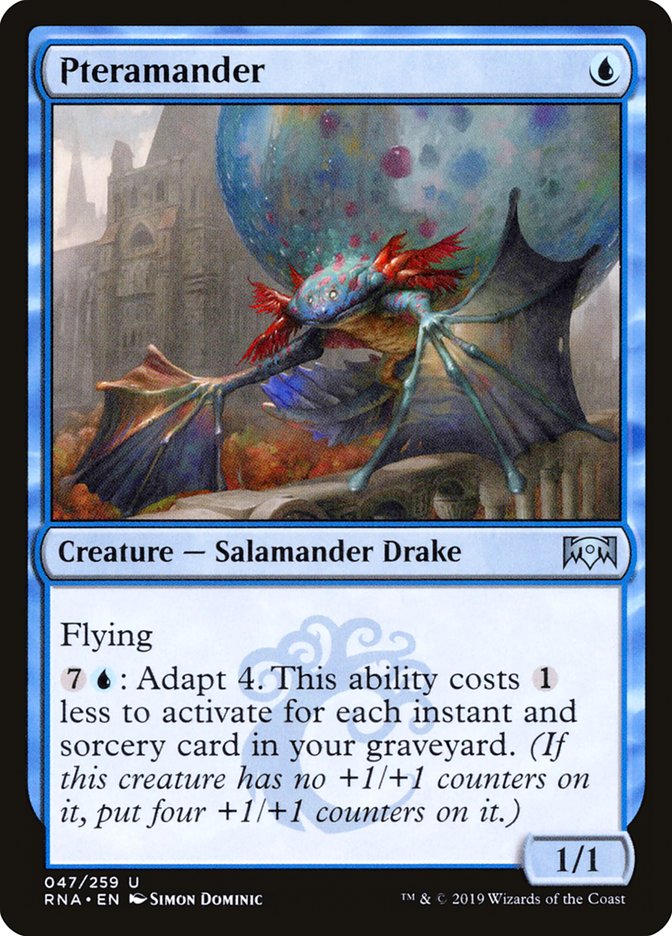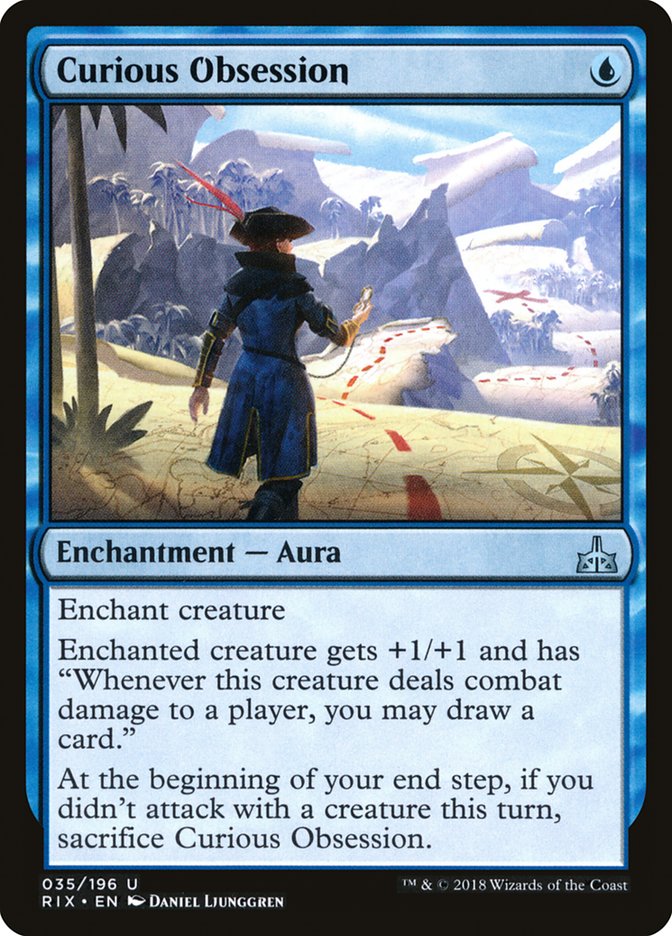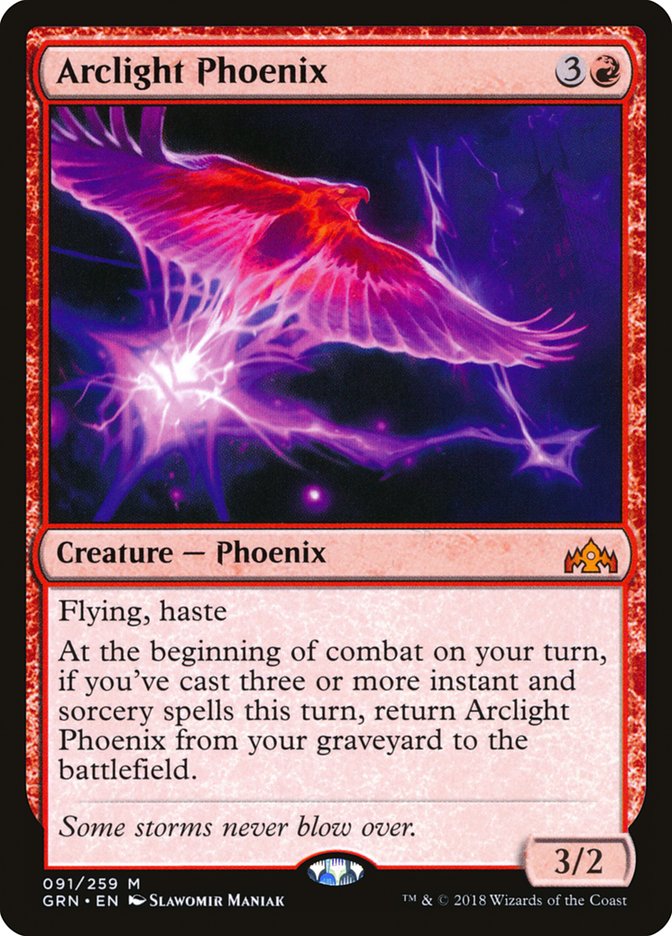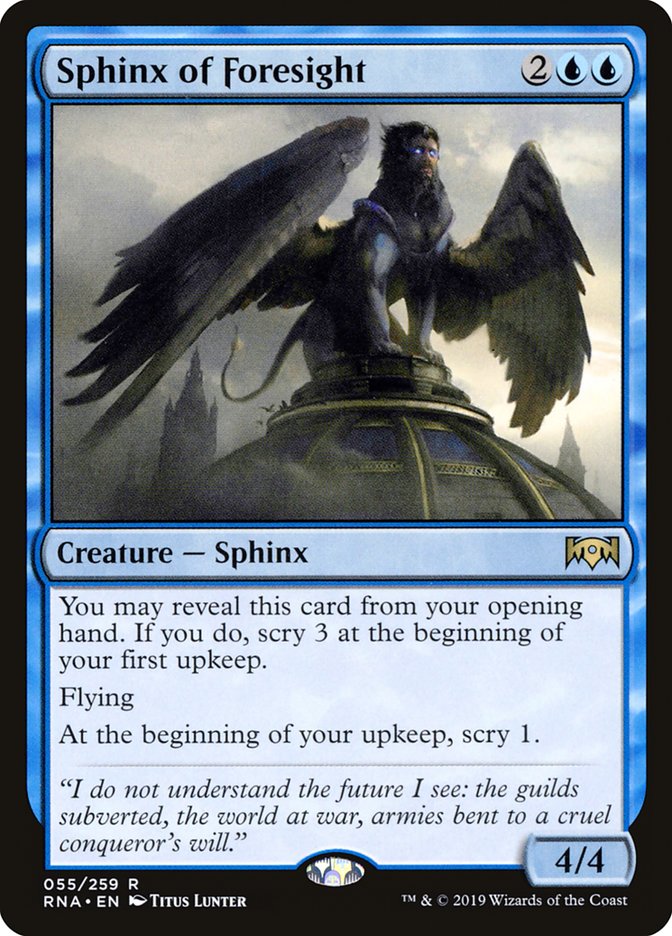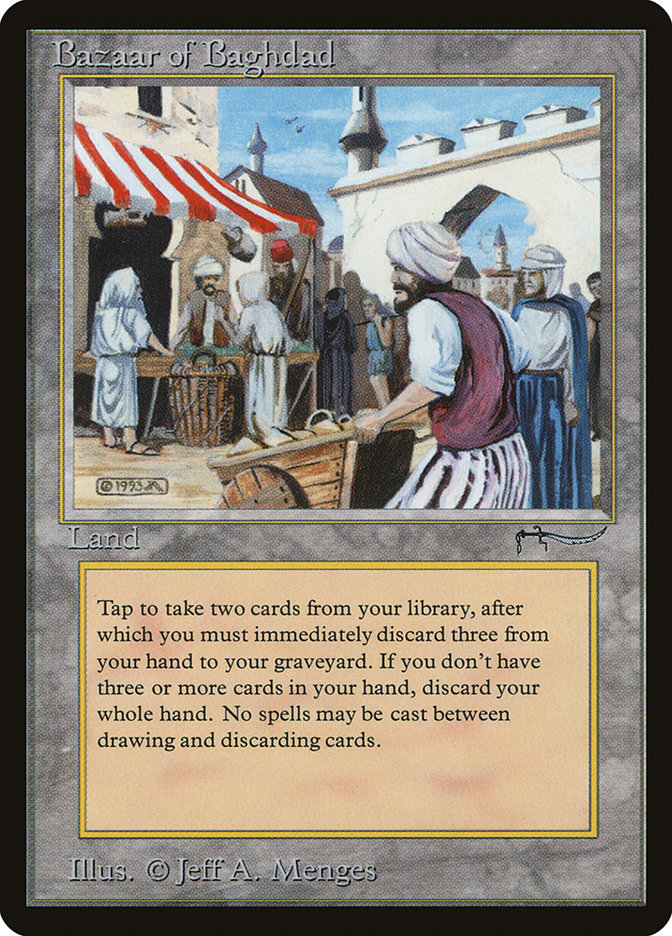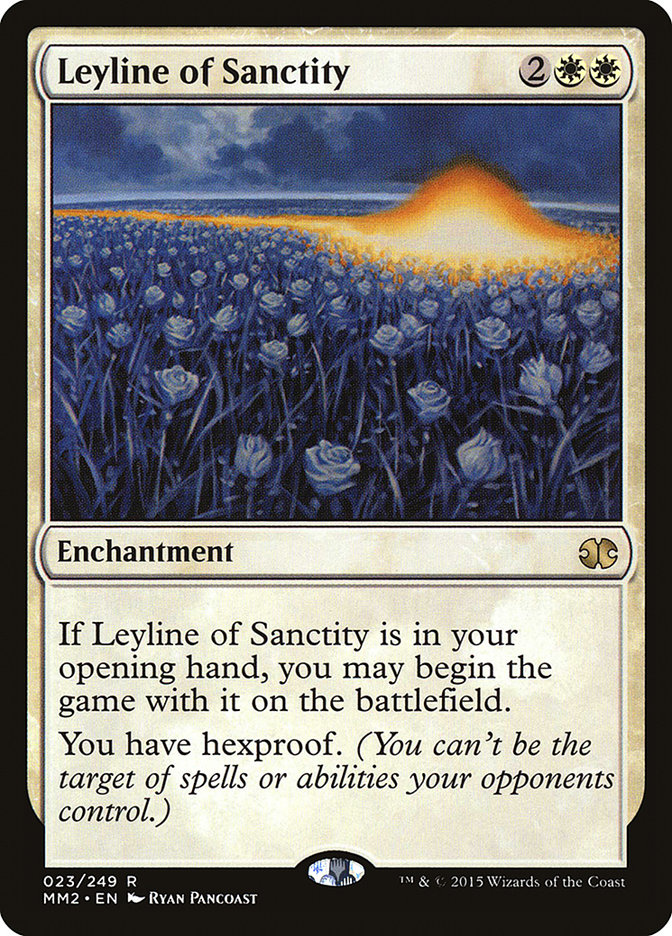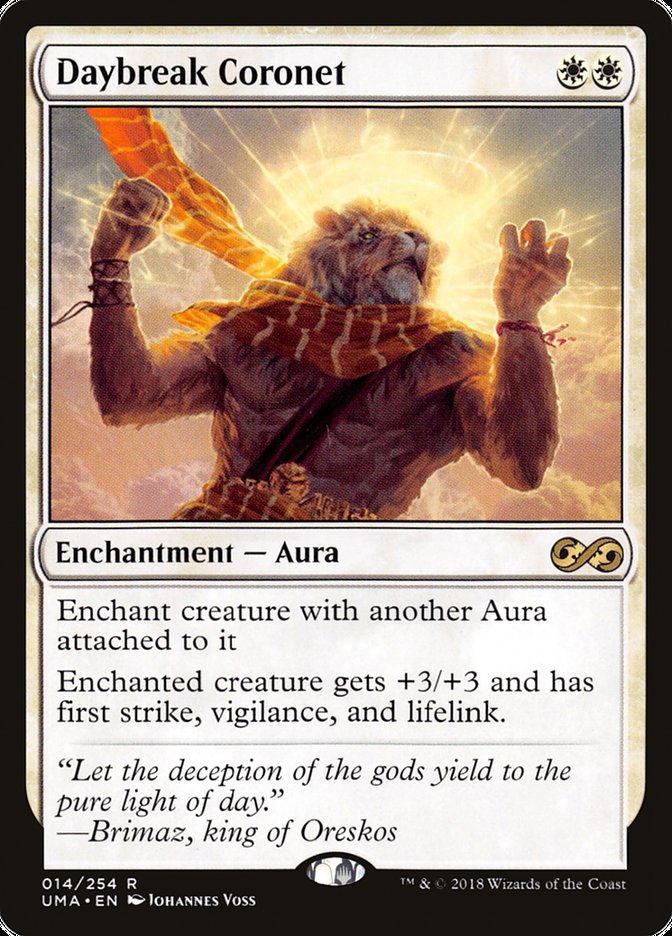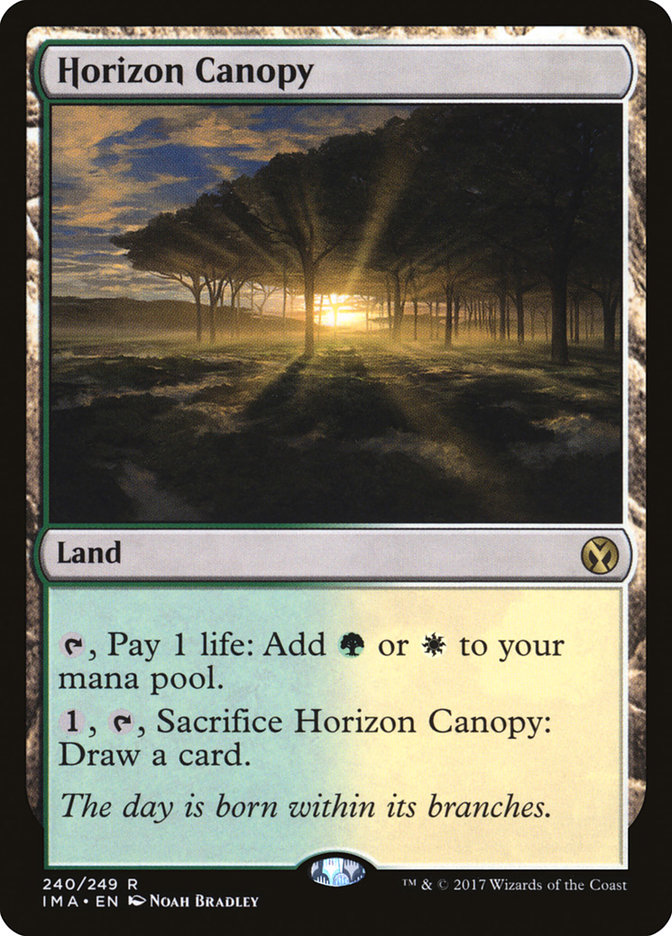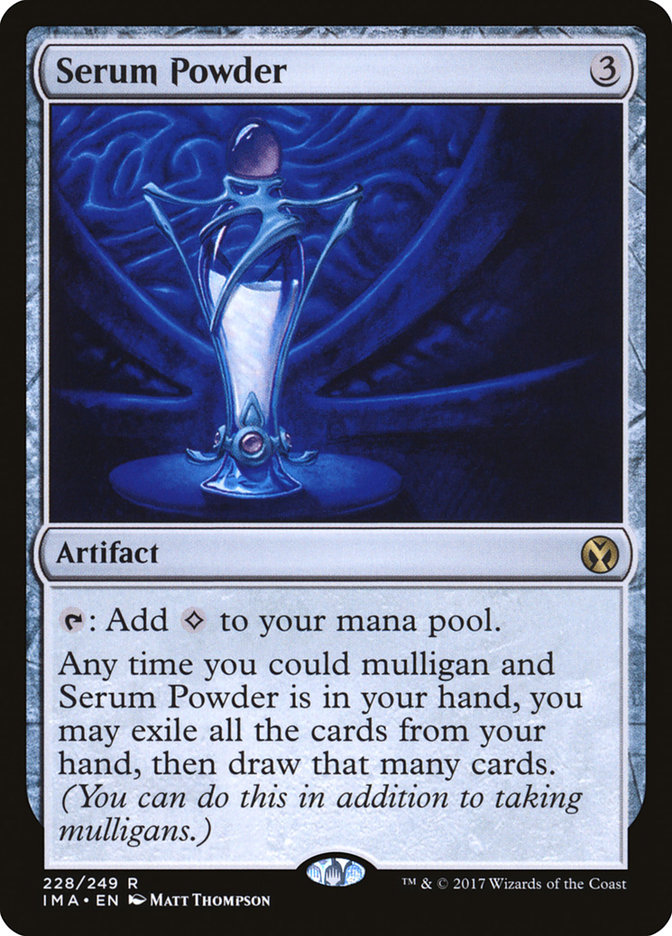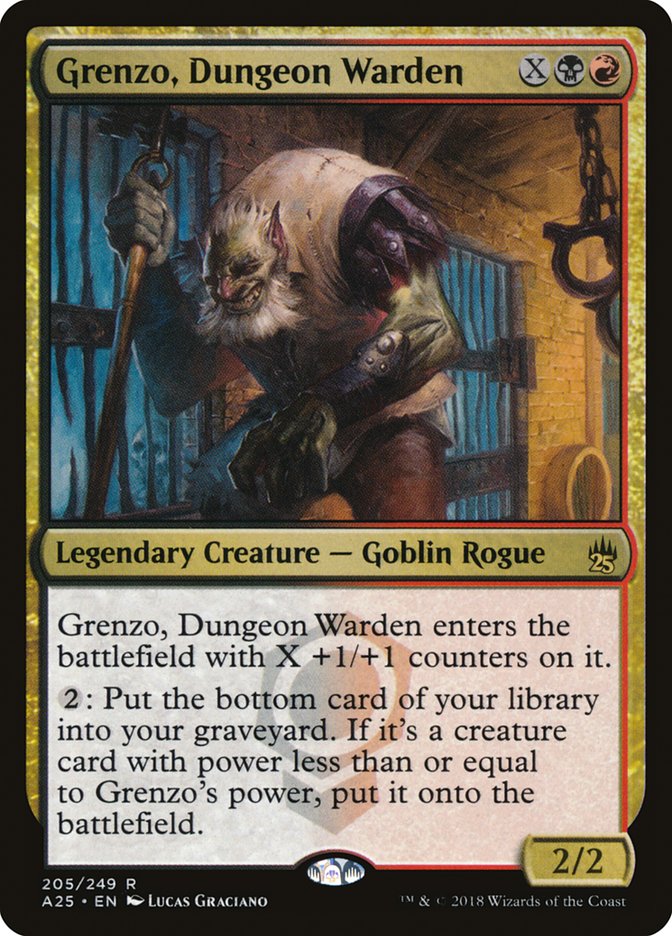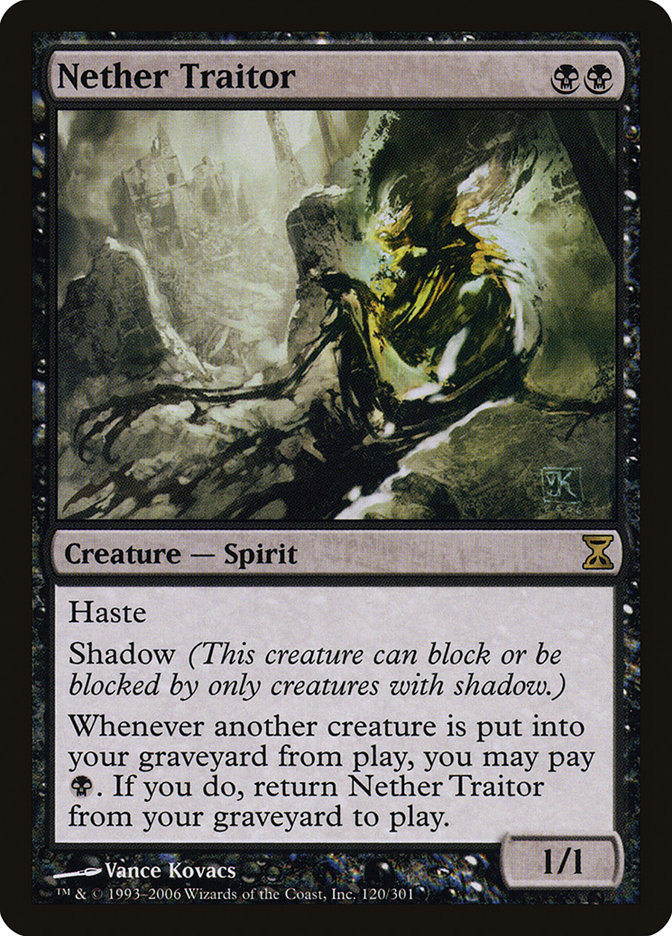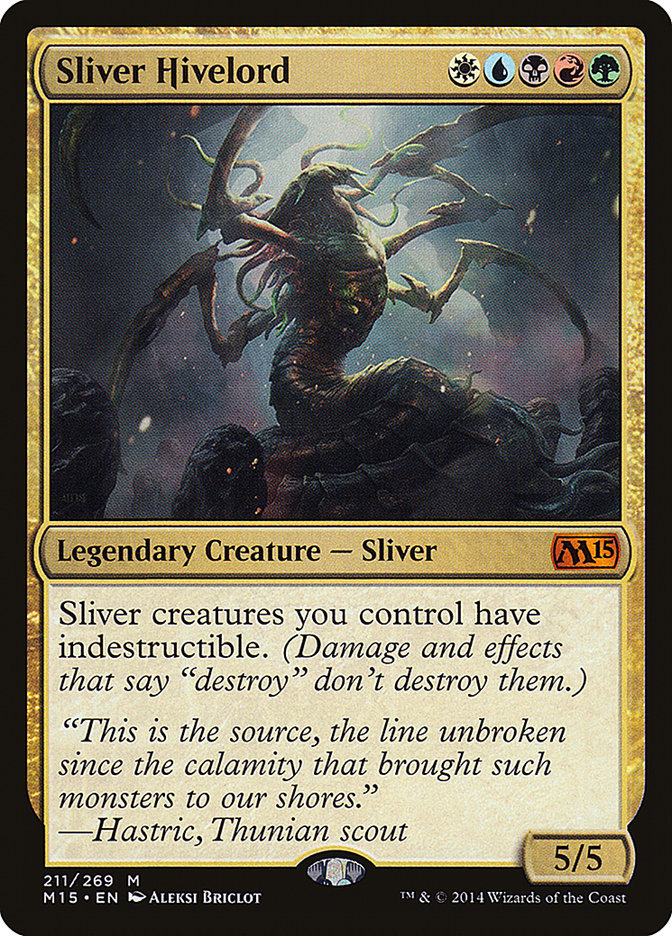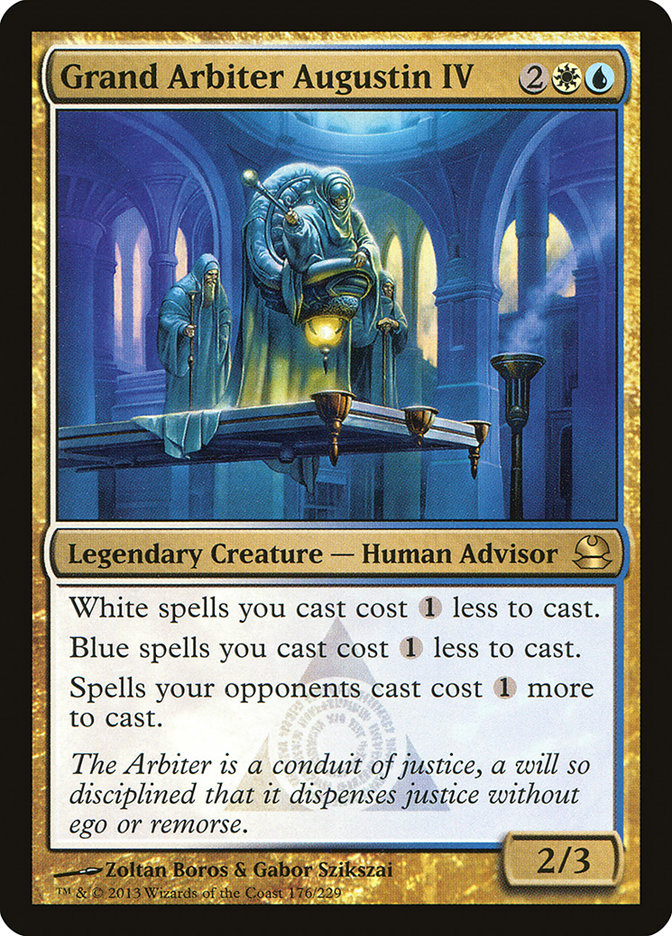The first-ever Mythic Championship is in the books, and it was a pretty sweet tournament to watch from afar. Ravnica Allegiance Standard isn’t quite as wide-open as Guilds of Ravnica Standard was, but it’s still a very entertaining and skill-testing format. The Mono-Blue Aggro mirror matches were super-fascinating to watch all weekend long.
Normally, after a large event like this, I’d run down the best decks card by card in order to highlight the key cards that might spike in value. I don’t think that’ll be necessary this time. Scheduling the Mythic Championship a full six weeks after each set release has reduced the number of innovative decks that appear in these tournaments, and Ravnica Allegiance Standard has proven to be a fairly stagnant format regardless. Sultai Midrange was the breakout deck back in Week 1, and it was still the most-represented deck in the format on both Day 1 and Day 2 of the Mythic Championship. You don’t need me to give you a primer on this deck; you’ve probably played against it a few dozen times by now.
I also suspect that fewer semi-casual players hold off until after the Mythic Championship before building their Standard deck now. Back when these events were only a few weeks after release, a lot of players would simply wait until they saw what made it into the Top 8 before choosing what to run for the several months. This would lead to many large price spikes, which savvy speculators could use to their advantage. With six weeks of lead time, though, most Magic players have already jumped head-first into this Standard format. Even if the events in Cleveland gave us a lot of insight into what makes this metagame tick, I’m not sure we can turn that into a lot of immediately actionable financial advice.
If you’re solely on the lookout for specs, never fear—just scroll down to the New Mulligan Rule section and you’ll find some sweet cards to buy. Otherwise, stick with me as I take a deeper dive into the lessons I learned from Mythic Championship Cleveland. They may not help you make bank this weekend, but they’re absolutely crucial to furthering our understanding of what this Standard format will look like moving forward.
The Conversion Percentage Champion: Bant Nexus
Day 2 conversion percentage is my favorite Mythic Championship statistic. Even though it’s super-recent, I don’t know how we lived without it. The only problem I have with the stat is that the coverage team doesn’t really hammer home the fact that the average conversion rate isn’t 50%. In this event, it was 63%, and so what we want are percentage figures that count up or down from 63% in order to be legible.
Eliminating all the decks that ten people or fewer brought to the Mythic Championship for small sample size reasons, we get this. Percentages are all plus or minus that 63% average:
|
Archetype |
Plus or Minus |
|
Bant Nexus |
+8.8% |
|
Azorius Aggro |
+4.7% |
|
Esper Control |
+1.4% |
|
Sultai Midrange |
+0.6% |
|
Mono-Red Aggro |
(-2.3%) |
|
Mono-Blue Aggro |
(-3%) |
|
Rakdos Midrange |
(-13%) |
|
Izzet Drakes |
(-19.7%) |
Keep in mind that these numbers are never going to be truly representational of deck quality. In fact, a lot of them could be heavily skewed by Limited play—several Rakdos Midrange or Izzet Drakes players may have had horrible drafts, plummeting them out of contention irrespective of their performance in Standard.
That said, these are the best numbers we have, and they tell a really interesting story.
For starters, the Nexus of Fate / Wilderness Reclamation decks appear to have been the clear winners of Day 1. This is a bit of a surprise—after performing well on Arena very early on, these decks never became the kind of dominant force in the metagame that many feared they would. But now, Nexus of Fate appears to be one of the strongest decks in the format, if not the absolute strongest.
This is a bit of an issue, in large part because Nexus of Fate is banned in Arena Best of One. It’s also a card that Wizards of the Coast isn’t interesting in spending too much time highlighting, which I can tell because it was rarely shown on stream last weekend except during backup matches and in the Top 8. Between the initial card availability issues, the frustrating play patterns, and the fact that it creates endless loops on Arena, it’s clear that both Wizards of the Coast and the masses are just about done with Nexus of Fate.
If things had shaken out differently, I might have pegged Nexus of Fate as the card most likely to gain value from this tournament. I don’t think it’s going to happen, though. First of all, most players aren’t going to parse through the coverage in order to find out how well the Bant Nexus decks did—and if you watched the stream, the narrative was clear: Mono-Blue Aggro was “the it deck” of the tournament, not Bant Nexus.
Also, the fact that Nexus of Fate is already banned in one version of Standard makes buying in pretty risky right now. While I’ve heard some theories that Nexus of Fate won’t be banned in Standard because that would be screwing over the Buy-a-Box promotion, I’m pretty sure that most stores aren’t relying on Core Set 2019 sales any more. It’s very possible that Wizards of the Coast will simply drop-kick the card out of Standard in the next Banned and Restricted announcement—and even if they don’t, I suspect that the fear of this possibility will be enough to prevent a price spike.
Cementing the Top Tier
Moving on, we’ve got five other decks—Azorius Aggro, Esper Control, Sultai Midrange, Mono-Red Aggro, and Mono-Blue Aggro—that performed within a few percentage points of the mean. These are all well-known decks, and there weren’t too many surprises. Sultai Midrange is still Sultai Midrange. It did fine. If that’s your deck, you probably aren’t switching off it now, nor do you have any new cards to buy.
One piece of tech I do want to talk about: Kaya, Orzhov Usurper. After being a no-show for most of this Standard format to date, the Orzhov planeswalker has begun showing up as a sideboard one-of in Esper Control and Mardu Aggro. This has caused the Magic Online price to spike from one ticket up to eight, but the paper price has remained stagnant. It’s not an amazing buy right now, since it is just a one-of, but that might change at some point. Make sure you have at least a few of these in your collection.
I also want to talk more about Mono-Blue Aggro. The deck is undeniably good, but its conversion rate in Cleveland was actually about 3% below par. That’s not awful, but it’s not terribly special, either.
That said, I’m not sure the conversion rate will matter much in terms of thinking about this deck’s popularity going forward. Not only was Mono-Blue Aggro being pushed hard on coverage all weekend, which will help drive demand, but Wizards of the Coast’s decision to focus on the deck paid off. Three copies of Mono-Blue Aggro made it into the Top 8, while no other archetype had more than one representative on Day 3.
Also, Mono-Blue Aggro is wildly cheap. You can buy all 75 cards for $50-$75. This is actually a pretty cheap Standard format overall, but it’s rare that a true budget deck performs so well. And this will help drive demand in a big way: FNM grinders watched popular pro players like Autumn Burchett and Reid Duke kick butt all weekend with a deck that costs about as much as a nice dinner out. Many of them are going to buy in.
Entrancing Melody and Pteramander have already just about doubled in price over the past few days, though that isn’t saying much. Both cards were $1 or less, after all. Over the next few days, I suspect that we’ll see a lot of the deck’s other cheap staples doubling up. Tempest Djinn is a clear target, since it’s one of the only rares in Mono-Blue Aggro, but Ixalan Block uncommons like Curious Obsession and Siren Stormcaller could start spiking as well. I’m not sure how much real money there is to be made here since we’re talking about cheap cards getting marginally less cheap, but the percentage on some of these gains are likely to be reasonably large.
Here’s another idea: why not buy a bunch of Mono-Blue Aggro staples in bulk, build full copies of the deck, and either sell or trade those? This is a strategy that used to serve me well a few years back, and the time hasn’t been right to run it back until now. People will pay a premium for the convenience of getting a full deck, and it’ll enable you to get the best price on all the staples. This sort of strategy only works when a deck is both cheap enough and good enough, but Mono-Blue Aggro might just be the ticket.
The Underperformer
Izzet Drakes did not have a good tournament. In fact, it had a very bad tournament, finishing almost 20% below the expected conversion rate. This, in large part, is due to the rise of Mono-Blue Aggro. Mono-Blue is the better Pteramander deck, so Izzet Drakes gets hit by backsplash from the meta adjustments against Mono-Blue without reaping too many of the advantages.
The good news is that Izzet Phoenix had an excellent tournament. All seven mages who brought Izzet Phoenix to Cleveland made Day 2, and Luis Scott-Vargas piloted the deck right into the Top 8. Financially, then, the underperformance of Izzet Drakes doesn’t really matter—if you’ve got the deck, all you have to do is roll your version back to last season’s build and you’re good to go. None of the deck’s key cards should lose any value at all.
It’s also likely that Arclight Phoenix will see yet another bump in price. The card’s value didn’t drop off at all over the past few weeks despite seeing roughly zero play in Standard, mostly because of how much success it has found in Modern. Now that it’s good in Standard again, though, look out. The Magic Online price has roughly doubled over the past month, and we could be looking at some serious gains in paper as well. I never speculate on cards that are already as expensive as Arclight Phoenix—too much can go wrong—but it’s one of the safest trade targets in the game right now.
Potential Rogue Decks to Watch
It has been a while since we’ve talked about Merfolk as a deck to watch, but Raphael Levy had an 8-2 finish in the Standard portion of the event with a pretty sweet Simic Merfolk build:
Creatures (30)
- 4 Silvergill Adept
- 4 Kumena's Speaker
- 4 Kumena, Tyrant of Orazca
- 4 Merfolk Mistbinder
- 4 Deeproot Elite
- 4 Jade Bearer
- 2 Merfolk Trickster
- 4 Benthic Biomancer
Lands (22)
Spells (8)
Sideboard

The clear card to watch here is Kumena, Tyrant of Orazca. This mythic creature has frustrated my expectations from the start, and I’d love nothing more than to watch this one jump from $9 back up to $20 or so. It would require quite a few more people to get excited about this deck, but an 8-2 finish at a Mythic Championship is a start. Keep your eye on this deck for sure.
I also kind of love the Temur Reclamation deck that Pascal Maynard brought to Cleveland:
Creatures (2)
Lands (26)
Spells (32)

This deck is also far from unknown, and I’ve seen similar builds show up on my radar over the past couple of weeks. That said, Wilderness Reclamation is an absurd Magic card, and if Nexus of Fate is banned in Standard at some point, decks like this will certainly take up the mantle.
Niv-Mizzet, Parun and Search for Azcanta see play in multiple other decks, so Rekindling Phoenix and Biogenic Ooze probably have the most room to gain. I’m not buying either yet, but I’ll take a long look at decks like this if Wizards of the Coast decides they’re done with Nexus at some point.
The last deck I want to highlight is Frank Karsten’s build of Jund Midrange:
Creatures (28)
- 4 Rekindling Phoenix
- 4 Goblin Chainwhirler
- 2 Kraul Harpooner
- 4 Pelt Collector
- 3 Rix Maadi Reveler
- 4 Gruul Spellbreaker
- 4 Growth-Chamber Guardian
- 3 Gutterbones
Lands (25)
Spells (7)
Sideboard

This deck is distinctive and it only finished with a 6-4 record, so I doubt it’ll have too many copycats. That said, it’s full of cards that will see major price spikes if they ever catch on: Rekindling Phoenix, Pelt Collector, Gruul Spellbreaker, and Growth-Chamber Guardian. Much like with Temur Reclamation, I’m not even close to going in on any of these right now, but this is certainly a style of deck that I’m going to be keeping my eye on.
Speculating on the (Potential) New Mulligan Rule
The Magic community got hit with a bombshell last Thursday, with the announcement that Mythic Championship London will be the testing ground for a major new mulligan rule. It works like this: instead of going straight to six, or five, or four, you draw a hand of seven cards each time you mulligan and then put cards on the bottom of your library equal to the number of mulligans you’ve taken. So on a mull to five, you’d look at seven, decide to keep, and then tuck two of the seven onto the bottom of your library.
Patrick Sullivan wrote about the potential new rule from a design perspective, but what about from a finance perspective? Well, in Standard, a change to the mulligan rule is unlikely to have much of a ripple effect. It might be an improvement for the slightly more inconsistent decks, but I doubt it’ll be enough to tip the balance of power in one direction over another. If anything, it’ll just help prevent feel-bad situations on camera like when Luis Scott-Vargas lost on a mulligan to five during the last game of a Pro Tour.
As Patrick Sullivan said in his article, long-time Magic players are used to some games of Magic just being over before they start, but Arena-first players with experience in games like Hearthstone or Eternal are likely to be turned off by this. Anything that helps reduce the number of non-games is probably a good thing.
One Standard card does get meaningfully better, however: Sphinx of Foresight. Many of the best decks in Standard right now already run blue, and getting multiple chances to end your mulligan with the opportunity to scry 3 seems excellent. This card is readily available for less than $1 right now, and it’s the sort of spec that might pay off big after London.
Moving on, this new mulligan might be game-changing in formats like Vintage, Legacy, and Modern. I tend to agree with Patrick’s take that the new rule is basically incompatible with Bazaar of Baghdad remaining unrestricted in Vintage, though I doubt that change would meaningfully hurt the price of that card. Reserved List staples from as far back as Arabian Nights are more or less immune from this sort of price volatility, and I can’t really see too many of the players who currently own four of them actually selling any of their copies. It’ll probably keep the card from continuing to rise in price, but I’m not going to sell my personal copy.
In Modern and Legacy, the two best Leylines (Leyline of the Void and Leyline of Sanctity, natch) emerge as the biggest clear winners. I’ve already started to see Leyline of Sanctity ticking up due to this potential rules change, and I suspect that Leyline of the Void will join in on the fun before long. My one caution here is that we’ve got a new Modern product due to be announced in about a week, and both of these cards seem like they’re due for a reprint.
If they aren’t back, however, look out. For all the ways that this new mulligan rule seeks to eliminate non-games in Standard and Draft, it’s likely to make cards that create non-games in Modern and Legacy far more prevalent and powerful. After all, if Leyline of the Void basically means that your opponent can’t play Magic, why not just mulligan into oblivion in order to find it? I’m expecting at least a 20-25% increase on these two in the short term, with far more room to grow if they aren’t reprinted.
This new rule would also be a boon for combo and combo-adjacent decks like Dredge, Hexproof, and Belcher. Modern Dredge is already a Tier 1 deck, and this would only throw gasoline onto that fire. Leyline of the Void is already the most expensive card in the deck, but other Dredge staples like Bloodghast and Life from the Loam would probably see price increases as well. I wouldn’t spec too hard in this direction since everybody already knows that Dredge is Tier 1, so it’s not like there are any cards in this deck that are underrated at the moment. Plus, any further improvements might lead to a Faithless Looting ban.
Hexproof is more interesting. The deck hasn’t been top-tier in Modern for a while, but it’s got a pretty solid track record and is far better if you can guarantee yourself an early Leyline of Sanctity. There aren’t a ton of great specs here, but Daybreak Coronet probably has some room to grow. It would also be yet another reason to considering buying Horizon Canopy.
Moving on, we’ve got a couple of intriguing “mulligans matter” specs in Gemstone Caverns and Serum Powder. Gemstone Caverns is already pretty expensive, but it does see a decent amount of play and this new rule would make it slightly more powerful. I’m always skeptical about buying into a card that’s $26 mostly because it has never been reprinted (Gemstone Caverns card would be $5 or less after a reprint), but if that reprint doesn’t happen, $50 isn’t out of the question.
Serum Powder is more likely to see a spike. In fact, that spike is already sort of happening; these were easy to find for about $1 on Thursday, and they’re difficult to snag for $2 right now. Before going too deep, it’s worth noting that Serum Powder does not work the way you want it to with the new rule: there’s no way to use the Powder on your second or third mulligan in order to get seven cards. On the other hand, the impact of having Serum Powder in your deck is lessened because if you draw it in one of your later mulligans, you can always tuck it under your library if you want to keep your hand.
My gut feeling is that Serum Powder gets better with the new rule, but not by as much as some people think. It still wouldn’t take much to end up in a world where this card is stable in the $5-$10 range, but I’m not quite sure how we get there. I’m totally fine gambling on this one for a buck, but I’m still a bit skeptical about this card’s long term chances.
If you’re looking for a super-deep sleeper that hasn’t started moving yet, why not consider Grenzo, Dungeon Warden? It was just reprinted in Masters 25, which means that the available supply is fairly large, but not nearly as large as it would be if Grenzo were in, say, Ravnica Allegiance. Not only does Grenzo see a little play in Legacy, but he’ll likely become a casual and Commander darling with this new rules change. There are tons of copies kicking around for $0.50 each, making it the lowest risk spec on this list.
Last, it’s worth pointing out that this new rule might not end up being enacted at all. I could also imagine Wizards of the Coast choosing to implement it in Standard and Draft but not in Modern, Legacy, or Vintage. Speculating on the fallout of this new rule is worth considering, but don’t forget that it’s far from a done deal like most people seem to think.
This Week’s Trends
After a few weeks of Organized Play chaos and lots of anxious people on my Twitter feed lamenting the impending death of paper Magic, we finally got good news this week. There’s a new PTQ-style way to qualify for large events, we’ve got a Modern Mythic Championship on the horizon, and video coverage is returning for select Grand Prix events. Hooray!
While these updates aren’t enough to reduce everybody’s anxiety about the future of competitive paper Magic, they’re also not the sort of steps you’d see if Wizards of the Coast really were abandoning the tabletop side of the game. I don’t think the growing pains are close to over, and I would have preferred a much more measured roll-out of all the competitive Arena stuff, but I still feel really good about the value of my tabletop collection as we head toward Magic’s 30th birthday.
One other big-picture wrinkle was announced this week: Wizards of the Coast is abandoning MSRP! It’s far too early to know what this means for us, but I’ve heard a lot of people theorizing about it anyway. Wizards of the Coast claims that this change was due to issues with MSRP as an overall concept in some countries, and it’s possible that’s literally the only reason for this announcement.
Of course, it’s easy to come up with theories that the real reason why Wizards of the Coast wanted to get rid of MSRP is to do a stealth price increase to booster packs, or because they were frustrated by the backlash to the MSRP of Ultimate Masters, or as a way to help sell more packs for less via Amazon without revealing just how much that would mess with LGS profits and distribution.
There’s no way of knowing if there’s any validity to any of this, of course. I tend to be skeptical of conspiracies, though I’ve felt that booster packs were due for a price increase for years now. For now, we’ll just have to wait and see.
Over in Modern, it was another good week for Surgical Extraction and Jace, the Mind Sculptor. These two Modern stalwarts gained another $5 each as they both just keep climbing and climbing. Surgical Extraction has more than doubled since October, and Jace looks well on his way to $150. I don’t think anything short of a reprint will reverse these trends over the short-term, so feel free to keep holding for now.
Surgical Extraction’s little brother Extirpate also got in on the action this week. Not only is Extirpate a solid budget alternative to the expensive Extraction in some decks, but it was a four-of in a Saffron Olive brew from last week that uses Kaya, Orzhov Usurper alongside all sorts of Surgical Extractions in Modern. While Saffron Olive spikes rarely stick, I suspect that Extirpate isn’t going to see much (if any) drop over the short-term. It’s just too good right now.
Also up this week: Nether Traitor, which surged from $5 up to about $10. It’s unclear if this is due to Modern or Commander interest, since I’ve seen decks kicking around in both formats. I tried to find a recent Modern list that runs multiple copies of Nether Traitor and come up empty, but that doesn’t mean it isn’t out there. My guess is that this is yet another Teysa, Orzhov Scion Commander spike, which means that the price probably isn’t dropping below $10 anytime soon.
Speaking of casual play, it was a massive week for Commander spikes. Sliver Hivelord was the biggest one: the internet is abuzz with rumors of Slivers coming back in an upcoming set, and everyone wants a piece of that action. The result is that finding a copy of Sliver Hivelord for less than $30 has become pretty difficult. I tried to track down the source of these Sliver rumors and came up empty-handed. That doesn’t mean that they’re not real, but it’s not as simple as pointing to, say, a Blogatog post or an Aaron Forsythe tweet. I’d be careful buying in at this point—the price is already super-high, and it’s possible that the rumors were started by the same people who bought these out at the $10 level a few days ago.
Also up big this week: Craterhoof Behemoth, Grand Arbiter Augustin IV, and Nullstone Gargoyle. These are all pretty clear Commander spikes, and the casual market is hot fire right now. If you want to learn more about how to speculate along these lines, check out the article I wrote about Commander speculation last week. I’ve probably made more money speculating on casual cards over my career than on all the competitive formats combined, and you should ignore Commander at your own peril.


